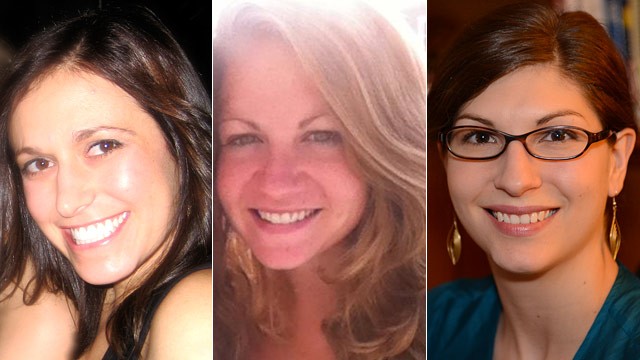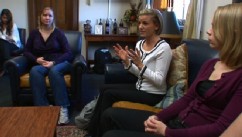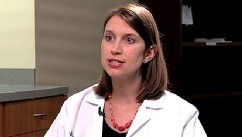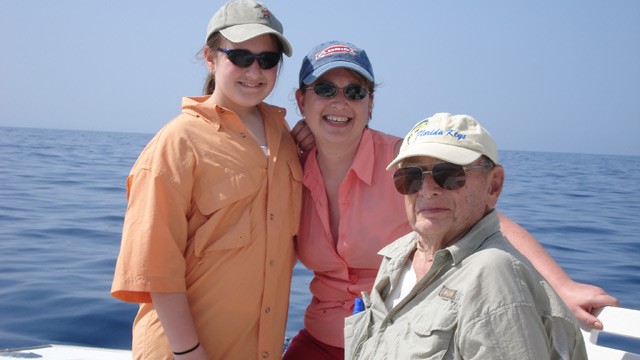In 1963, young girls could aspire to nothing more than to be married and to have children. In school, they were not allowed to be crossing guards, play competitive sports or even raise and lower the flag, because it was considered too dangerous. But that would soon change.
Fifty year ago this week, Betty Friedan published "The Feminine Mystique," an angry manifesto that shook the American homemaker's world and launched the second wave of feminism.
Then, women represented only 35 percent of the college graduates -- 60 percent dropped out, according to Stephanie Coontz, who examined the changing status of women from the suffragist movement to the 1960s in her 2010 book, "A Strange Stirring."
Even a decade later in the 1970s, women with a college degree earned less than a man with a high school degree.
"A noted psychiatrist at the time [Helene Deustche] said a normal woman renounces all individual aspirations not out of coercion, but because she understands her needs are best met by the achievements of her husband," said Coontz.
Today the book baffles a generation of young women who played football and soccer under Title IX and whose numbers have now surpassed their male peers in law and medical degrees.
"Women still earn less than men do in every occupational category, but gender no longer trumps education," said Coontz, a professor of family studies at The Evergreen State College in Washington.
Unlike the housewives of Friedan's day, modern women enjoy the benefits of sexual revolution that were forged by their mothers in the 1970s. But they are mixed, as ever, about what it means to be a feminist.
Despite quantum gains in nearly every aspect of their lives, many say inequities still exist, particularly when it comes to attitudes toward sex. Others say Friedan's book -- though few have read it -- is dated and "irrelevant."
"I believe that we are equal and entitled to everything men are entitled," said Jenna Helmer, 23, a recent college graduate who works as a classroom aide in New Jersey. "My generation has grown up where it's kind of been the norm.
"When I was growing up, our books at school told us women could be doctors and women could be police officers, too," she said. "That's a message we all can achieve things -- black, white, men, women, the disabled and not disabled."
But she said young women still struggle with the double standard: "If a man sleeps with a whole bunch of women, he gets patted on the back -- and oh wow, he's a ladies' man," Helmer said. "If a woman does that, she's written off as a slut and is considered easy."
Courtesy of Caitlin Terborg, Jenna Helmer and Julia Levine
Lena Dunham Wins for 'Girls' at Golden Globe Awards
Watch Video Friedan's book -- an attack on societal norms of "sexual passivity, male domination and nurturing maternal love" -- sold more than 3 million copies worldwide.
A middle-class housewife who lost her job as a reporter after she had a second baby, Friedan later became the founding president of the National Organization for Women and fought for abortion rights.
In a 2000 interview with the New York Times, the then 79-year-old Friedan said, "When I was a child, adults never asked girls what they wanted to be when they grew up. With girls they would say, 'You're such a pretty little girl -- you'll grow up, get married and have children just like your mommy.' Well, I sure as hell didn't want to be a mommy like my mommy.''
She died in 2006, but not before writing a memoir, ''Life So Far,'' that recounted a turbulent history, including some spousal abuse during her 22-year marriage.
The 400-page "Feminine Mystique" was "in some ways the first self-help book for women," according to Coontz. "It's dated, but that is its very relevance."
"For most women today, 1963 could be 1396, because they do not grow up in a world where employment ads are sex-segregated and head and master laws gave husbands the final say in the home and where rape was defined as forcible intercourse with someone other than a man's wife," Coontz said. "It's really important for women who get discouraged to understand how far we've come."
Still, women continue to make less in the workplace. And the United States is one of the few countries in the world that does not require paid maternity leave (or paternity leave, as in Sweden). No woman has yet become president.
"Now that we see access to the world of work, we have to make sure to stop assuming every employee has a wife at home," said Coontz, who writes about the topic, "Why Gender Equality Stalled" in this week's Sunday New York Times.
The sexual equality has only been half won, as well. Women are consumed by the "hottie mystique," a term she uses to describe the pressure they feel to elevate their sexuality above all other aspects of their identity.
HBO's popular television show, "Girls" by Lena Dunham, has been a touchstone for this generation, the millennials. But the 20-something characters, though sexually free, are at once aggressive and emotionally needy.
"It's fairly realistic," said Caitlin Terborg, a 27-year-old graduate student in communications from Denver. "They don't have jobs and they want to make something of themselves.
"Even how sex is portrayed -- there are girls who are virgins at this age and girls who are definitely putting themselves in situations where they can manipulate and where they can be taken advantage of," she said. "But they are having sex because they want to."
Sex continues to be about control -- control that goes both ways, said Terborg.
"Guys use it to control girls, and girls use it to control their boyfriends to get what they want or to keep them around," she said.
Terborg knows men still have an advantage in the work place, one of the reasons she is getting an advanced degree. She also worries about violence against women and the dismantling of their reproductive rights.
"We almost lost the right to choose free access to birth control -- that was pretty scary," said Terborg of recent debates over whether insurance companies should be required to pay for birth control under the Affordable Care Act.
"There is a spiral of silence -- we don't speak out because we are afraid of the responsibility or not fitting in," she said. "Sadly, I think there is a need for a writer [like Friedan] or a voice. Our generation is spoiled. ... Maybe there is a sense of entitlement."










 New York City lawyer Arthur Schwartz with his children from a second marriage, Jordyn 9, and Devin 7, at Disneyland.
New York City lawyer Arthur Schwartz with his children from a second marriage, Jordyn 9, and Devin 7, at Disneyland. 










